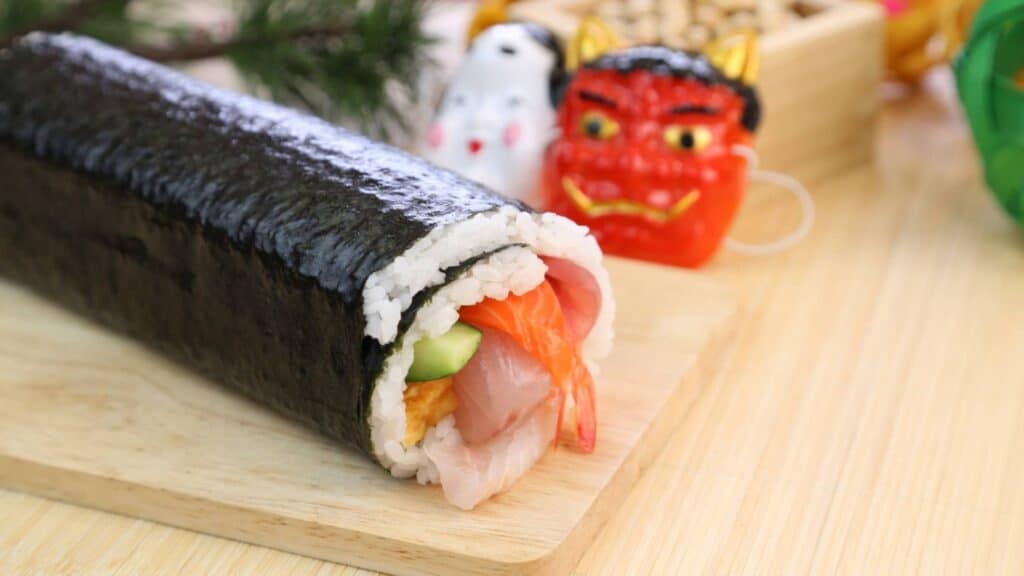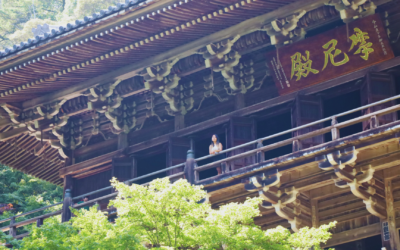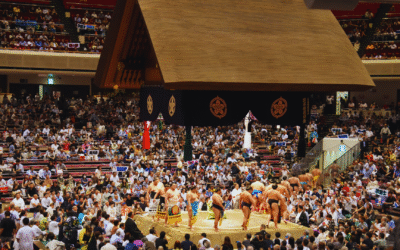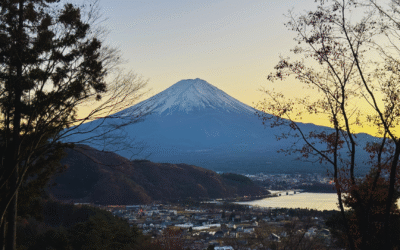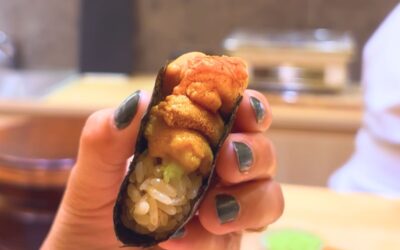If you’ve been strolling through town recently, you might have noticed colourful posters advertising giant sushi rolls. These intriguing rolls are none other than Ehomaki, a Japanese culinary tradition deeply rooted in culture and fortune-telling. But what exactly is Ehomaki, and why is it such a significant part of the Setsubun celebration? Join us as we explore the origins, meaning, and traditions surrounding Ehomaki sushi rolls in 2025 and beyond.
What Are Ehomaki Sushi Rolls?
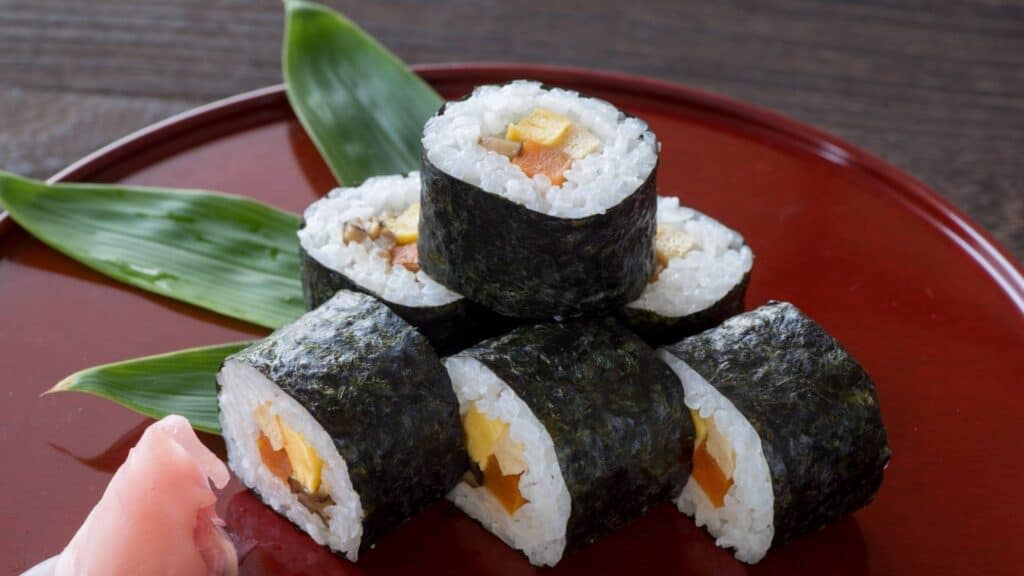
Ehomaki sushi rolls are no ordinary sushi. They are large, uncut rolls traditionally eaten during Setsubun, a festival that marks the transition between seasons. There are four Setsubuns each year, but the Setsubun marking the start of spring is especially significant. This event, akin to celebrating New Year’s, is when Ehomaki sushi rolls take centre stage. Eating Ehomaki during this time is believed to bring good fortune for the year ahead.
Each Ehomaki roll contains seven ingredients, symbolising the blessings of the Seven Lucky Gods in Japanese folklore. Unlike regular sushi rolls, Ehomaki is consumed whole, without cutting it into smaller pieces. This practice is meant to preserve the roll’s symbolism of unbroken fortune. When eating Ehomaki, it’s customary to face the year’s lucky direction, determined by Ehomaki, the god of fortune, while silently making your wish.
When to Eat Ehomaki in 2025?
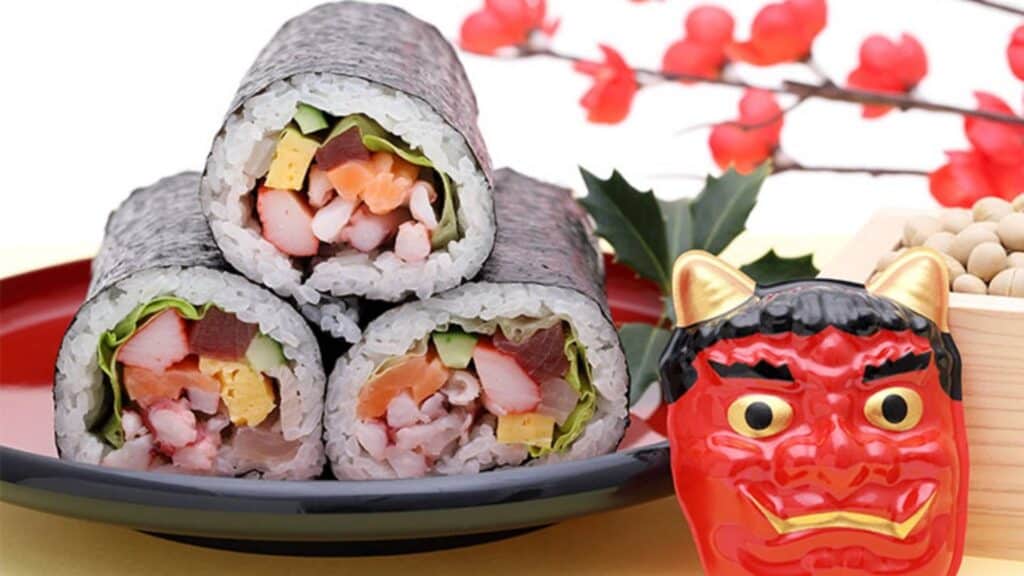
The official day for enjoying Ehomaki in 2025 is February 3rd, aligning with the Setsubun celebration. Originally, Setsubun referred to the day before the start of any season—spring, summer, autumn, or winter. However, the Setsubun before spring gained prominence in ancient times, as it coincided with the beginning of the Japanese New Year. Over time, this spring Setsubun has come to overshadow the others.
In recent years, variations of the tradition have emerged, with spring, summer, and autumn Ehomaki rolls appearing in May, August, and November, respectively. This adaptation reflects the growing popularity of Ehomaki sushi rolls across Japan.
The Origins of Ehomaki

The roots of Ehomaki can be traced back to Osaka’s Hanamachi district during the Edo to Meiji periods. Merchants and geisha would celebrate Setsubun by eating these festive rolls while praying for prosperous business ventures. Back then, Ehomaki was referred to as “Maru Kaburi Sushi” or “Taimaki Sushi,” highlighting the use of seven ingredients representing the Seven Lucky Gods.
During the early Showa period, sushi vendors began promoting Ehomaki, helping it gain traction among the general public. By the late 20th century, corporate campaigns propelled this Kansai-based custom to national popularity. Today, Ehomaki sushi rolls are enjoyed across Japan and beyond.
A Brief History of Ehomaki
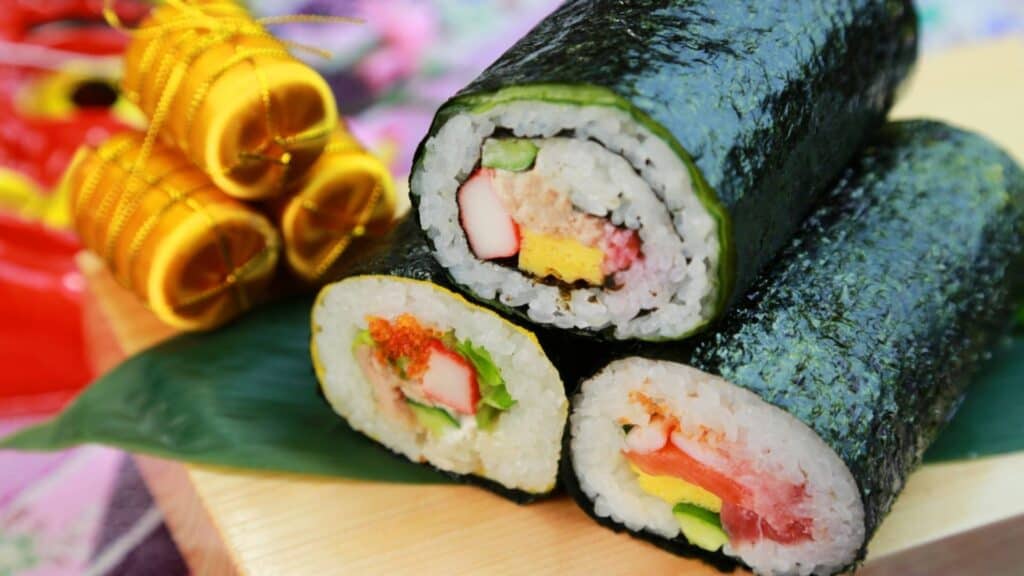
Early Taisho era: During the Setsubun period in Osaka, seaweed rolls were wrapped with fresh incense and enjoyed as part of the celebration. These rolls symbolised purification and a connection to tradition, providing a spiritual start to the seasonal transition.
1932: The Osaka Sushi Trading Association launched a campaign promoting “Marukaburi on Setsubun Day,” officially naming these rolls “Honfuku Sushi.” This initiative aimed to highlight their auspicious qualities and make them more appealing to the public.
1973: Department stores in Osaka introduced “lucky roll sushi sales” during Setsubun, making Ehomaki widely accessible to city residents and further cementing the tradition’s popularity.
1977: Dotombori’s “Nori Festival” featured a sushi roll eating competition. This lively event brought Ehomaki to the forefront of media coverage, significantly increasing its recognition across Japan and inspiring similar festivals nationwide.
1983: FamilyMart began selling Ehomaki in Osaka and Hyogo prefectures, making the rolls a convenient and affordable option for families.
1989: Seven-Eleven extended Ehomaki sales from Hiroshima to the entire country by 1998, ensuring that this tradition reached households nationwide and became a staple of Setsubun celebrations.
What’s Inside an Ehomaki Sushi Roll?
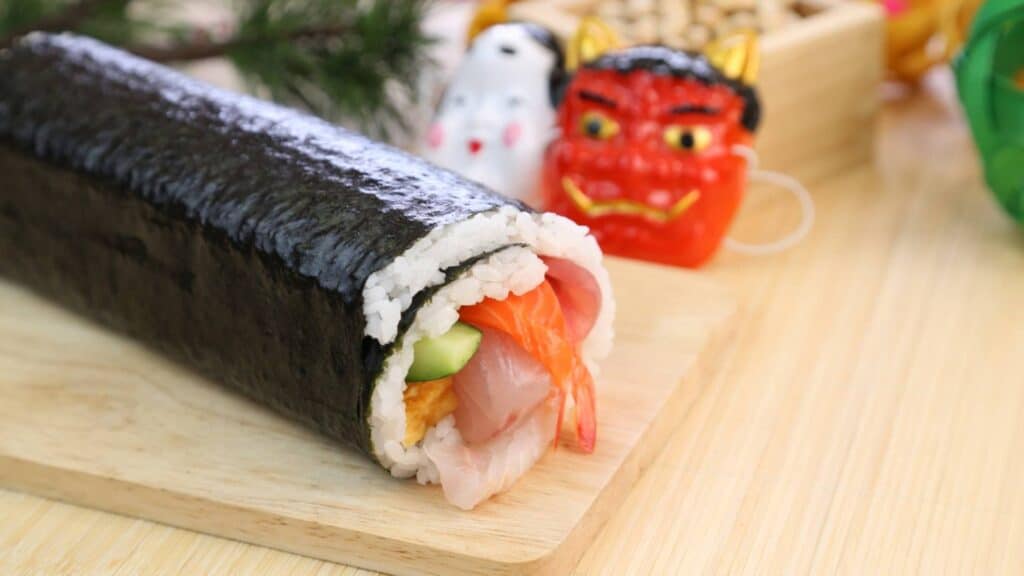
Traditional Ehomaki rolls are filled with seven carefully chosen ingredients, such as sweetened kanpyo (gourd strips), shiitake mushrooms, seasoned fish flakes, strips of cucumber, and rolled omelette. These ingredients symbolise wealth, happiness, and longevity. For seafood enthusiasts, rolls can include shrimp, squid, tuna, and salmon roe, adding a vibrant touch to the dish.
How to Make Ehomaki
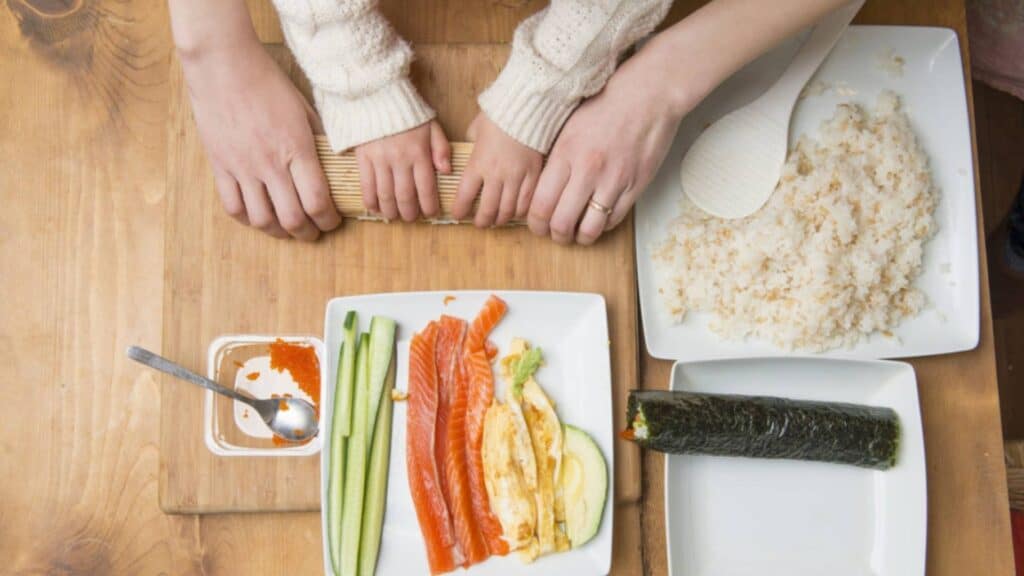
Making Ehomaki at home requires a few essential steps:
- Prepare the rice: Mix freshly cooked rice with sushi vinegar. If you don’t have ready-made sushi vinegar, combine 180ml of vinegar, 5 tablespoons of sugar, and 1 teaspoon of salt.
- Prepare the ingredients: Cut the fillings into strips and pre-cook items like shiitake mushrooms and kanpyo. These can be stored for a few days if prepared in advance.
- Roll the sushi: Lay a large sheet of nori on a bamboo mat (makisu), spread the vinegared rice evenly, and place the fillings in the centre. Roll it tightly and seal the edges with a dab of water.
How to Eat Ehomaki
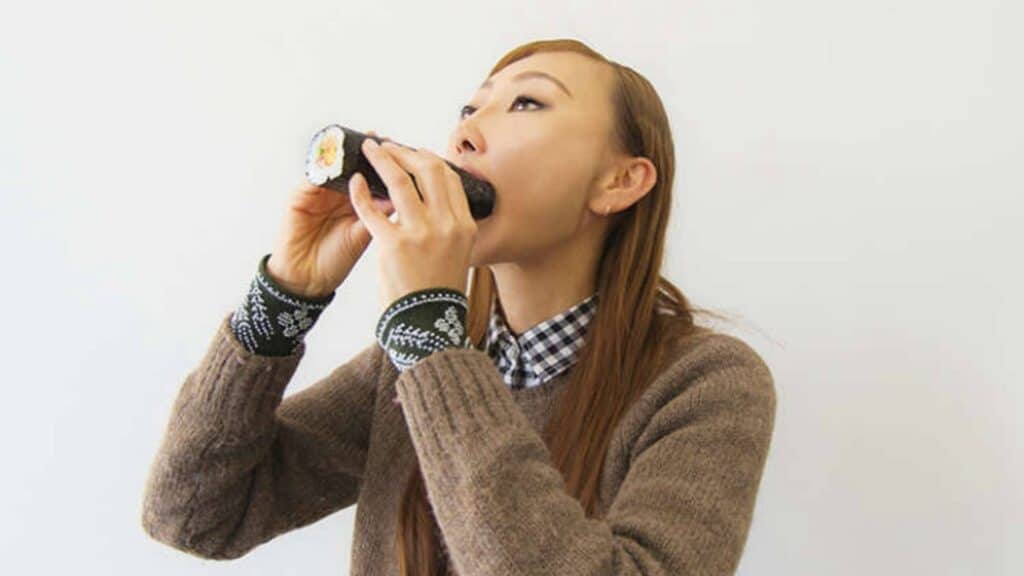
Eating Ehomaki is a special ritual that requires adherence to a set of unique rules designed to maximise the fortune it brings. Here are the steps to properly enjoy this traditional treat:
- One roll per person: Each individual should have their own uncut Ehomaki roll. The roll’s unbroken form symbolises undivided fortune and prosperity for the year. Sharing or cutting the roll is considered unlucky, as it could metaphorically “cut” your fortune.
- Face the lucky direction: In 2025, the lucky direction to face while eating Ehomaki is north-northeast. This direction, determined by Japanese astrological traditions, aligns with Toshigami, the deity of fortune. Facing this way ensures that you’re in harmony with the forces of good luck for the year.
- Eat silently: When eating Ehomaki, remain silent from the first bite to the last. This practice helps you focus on your wishes and prevents good fortune from “escaping” through conversation. Some even close their eyes to deepen their concentration on their desires for the year. It’s also customary to eat the entire roll in one sitting, further symbolising completeness and dedication.
Where to Buy Ehomaki
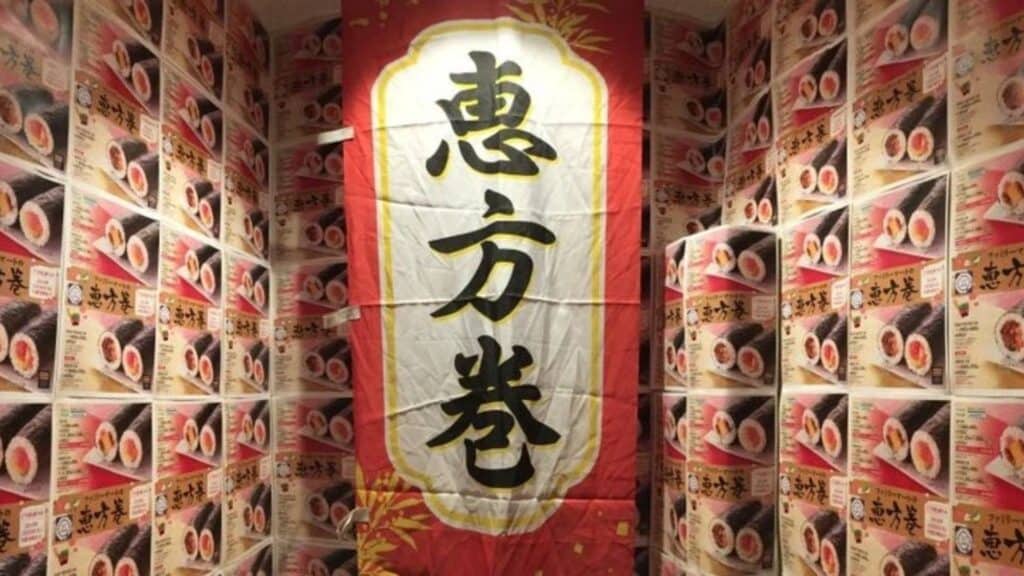
If the idea of preparing Ehomaki at home feels overwhelming, there are plenty of places to buy it, each offering unique variations and conveniences:
- Department stores: Known for their high-end offerings, department stores often feature luxurious Ehomaki options. These rolls may include premium ingredients like fresh seafood or even non-traditional fillings for a modern twist. Explore the basement food halls of department stores to discover beautifully packaged rolls perfect for gifting or indulging.
- Supermarkets: For affordable and family-friendly options, supermarkets are an excellent choice. They usually offer a variety of Ehomaki styles, including smaller rolls for children or elderly family members. Keep an eye out for discounts on unsold rolls toward the end of Setsubun Day, making it a budget-friendly option.
- Convenience stores: Convenience stores have played a significant role in popularising Ehomaki across Japan. With easy pre-order options and eye-catching displays, they make it simple to participate in the tradition. Some stores even sell fun, themed Ehomaki that appeal to younger generations or feature regional specialities.
- Sushi restaurants: For a gourmet experience, visit a sushi restaurant offering Ehomaki. These rolls often showcase the freshest seafood and high-quality ingredients, making them a true culinary treat. Many restaurants provide discounts for early reservations or bulk orders, making it an excellent option for hosting gatherings.
Continuing the Tradition of Ehomaki
As you prepare for Setsubun in 2025, embracing the Ehomaki tradition is a meaningful way to connect with Japanese culture and its rich history. Whether you choose to craft your own rolls at home or purchase them from a local shop, the ritual of eating Ehomaki offers a moment of reflection and hope for the year ahead. Facing the year’s lucky direction and silently making wishes are simple yet profound acts that tie the past and present together in this cherished custom.
This annual celebration goes beyond just food; it represents unity, prosperity, and a chance to align with good fortune. So, gather your ingredients, invite loved ones to participate, and savour the experience of this timeless practice. Let Ehomaki guide you into a year filled with luck and happiness.

